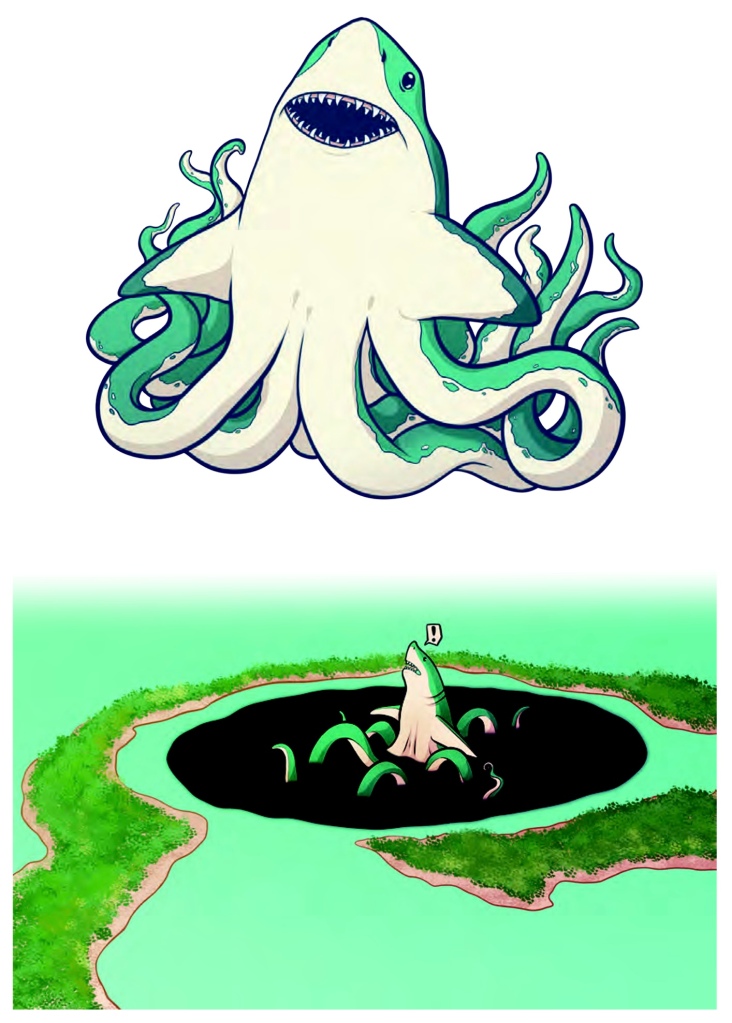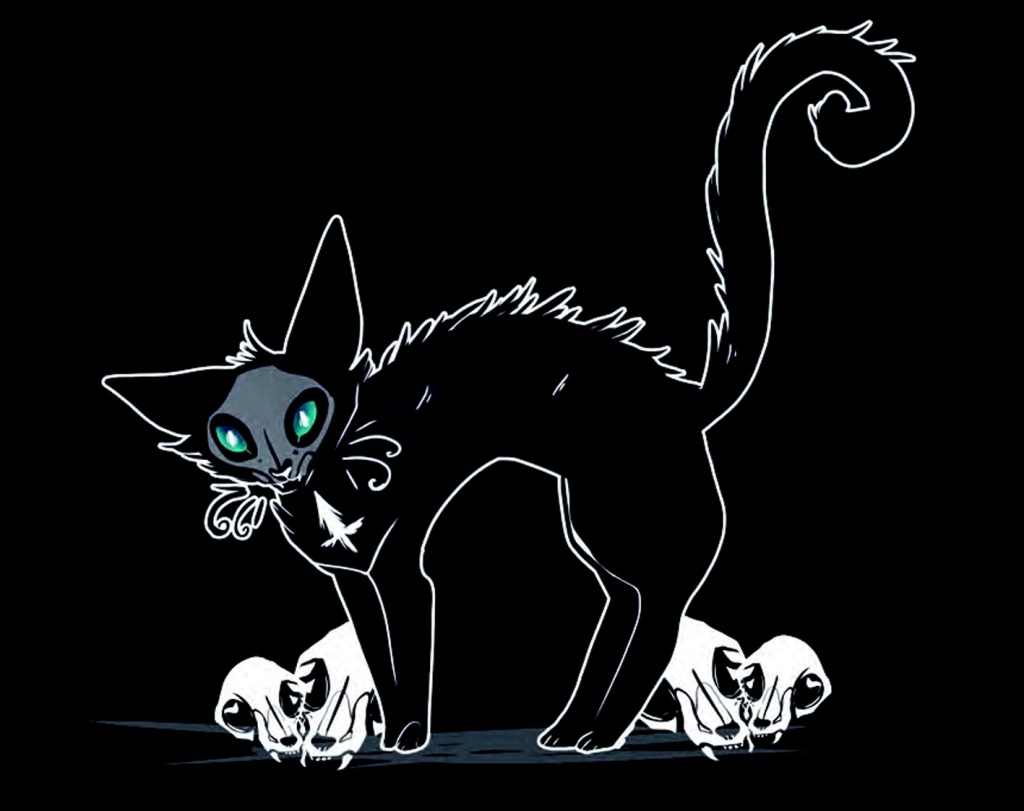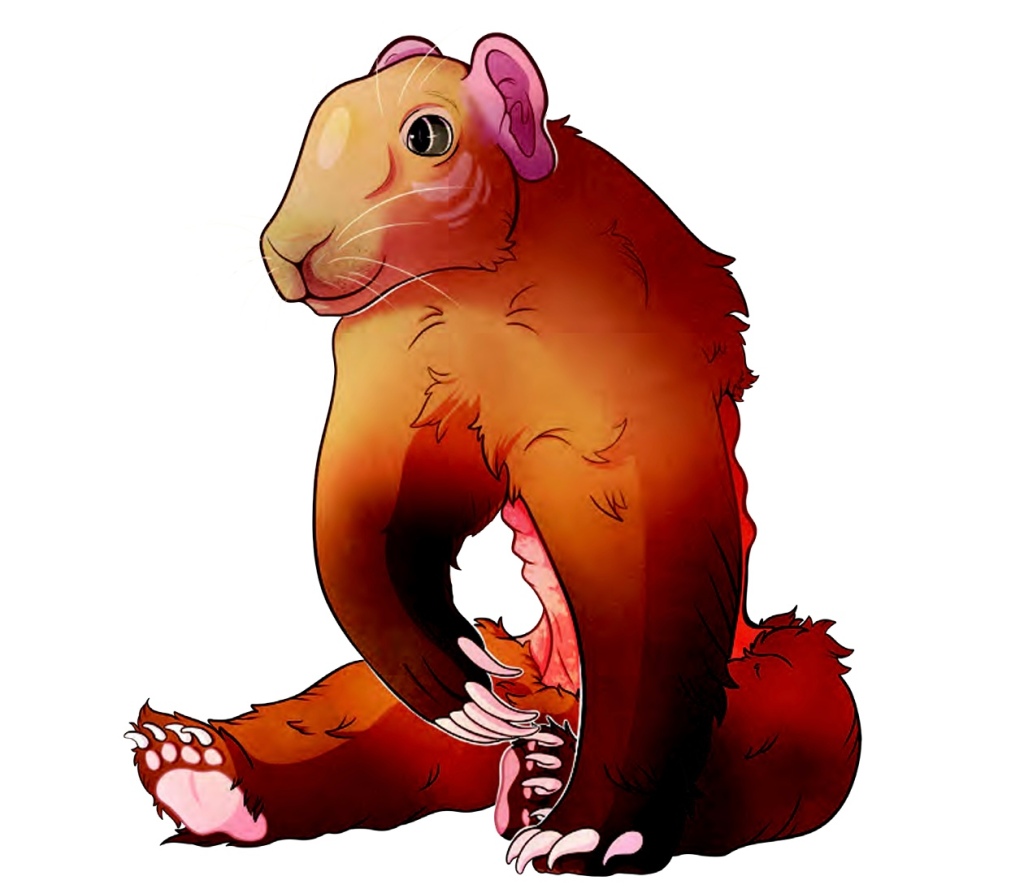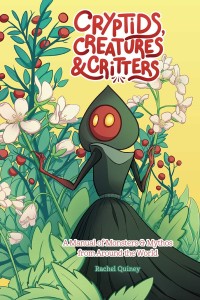I blame Mulder. Sure, I already knew about Bigfoot and the Loch Ness Monster through some sort of cultural osmosis but had no overwhelming urge to learn about creatures I hadn’t met before. Thirty years ago, I found out that the truth was out there and, well, my curiosity never went back in its box.
This book is divided into three sections: cryptids, folklore and mythology. The entries in each section are alphabetised and illustrated. I absolutely loved the illustrations!
If you know me at all, you know it’s not possible for me to overdose on fun facts. I may drown you in them but I’ll be good to keep going. It was so hard to decide which were my favourites. I’ve managed to narrow it down to three from each section.
Cryptids
The hoop snake bites its tail to form a hoop. It gets to its victims by rolling towards them, “reaching speeds of up to 60 mph (97 kmph).” It stabs its victims with sharp prongs at the end of its tail.
The tizzie-whizie loves ginger biscuits and warm milk.
One of the descriptions of the Lusca, a Bahamian cryptid, is half shark and half octopus, which naturally made me think of one of the many Eric Roberts movies I’ve seen too many times, Sharktopus. Come to think of it, I met a lot of these creatures in B grade movies.

Folklore
Cat sídhes have an interesting collection of stories behind them. Many believe them to be witches who have transformed into cats. Limited to transforming only eight times between human and cat, on the ninth transformation, the witch would be unable to return to their human form and would be thus trapped as a cat. Some believe this to be the origin of the tale that cats have nine lives.

With its name translating to “the roaring animal” or “the fetid beast”, the mapinguari isn’t a creature you want to come across. Some descriptions include a “large mouth across its stomach to devour humans who are too slow to escape.”
According to Romani and Slavic folk legends, pumpkins and watermelons are the only two types of vegetation that may become vampiric in nature. If a pumpkin or watermelon is left out under a full moon or kept for ten days after Christmas, it will turn into a vampire. Once transformed, the pumpkin or watermelon will roll around and pester the living with snarls or by knocking into furniture.
You know I’m going to try this one!
Mythology
There is a popular legend of the sazae-oni: A group of wealthy pirates rescue a young maiden, the crew have sex with her (versions vary on whether it was consensual or not), and she cuts or bites off the testicles of every man before returning to the ocean. From the ocean, she taunts the men and demands that they buy back their testicles from her. The pirates trade away all their gold in order to get their testicles. In Japan, testicles are sometimes called “golden balls,” creating the punchline that they paid for gold with gold.
Qilin are said to be so gentle that they walk on clouds because they don’t want to damage a blade of grass. However, they also “protect innocent people by incinerating those who seek to harm them with their fiery breath.” That’s the kind of cognitive dissonance I can get behind.
Rompo sing to themselves as they consume human flesh. If a mythological creature is going to eat my corpse, at least I can be content knowing they enjoyed doing so.

This is one of the most fun introductions to all things monstrous and maybe mythological that I’ve ever come across. I found out new fun facts about some of my favourites, learned of the existence of myths I’ve never encountered before and have an entire list of cute, creepy and downright diabolical creatures that I need to know more about.
Thank you so much to NetGalley and Andrews McMeel Publishing for the opportunity to read this book.
Once Upon a Blurb
Cryptids, Creatures & Critters: A Manual of Monsters and Mythos from Around the World features 90 different creatures from around the world, each with their own researched description and full-colour illustrations. The book is divided into three sections: cryptids, folklore, and mythology. It features popular cryptid favourites, such as Mothman and the Flatwoods Monster, and some lesser-known cryptids, such as the Enfield Horror and the Montauk Monster. For folklore, there are kelpies, selkies, cat sídhes, and grimalkins, along with the dobarchu and the vampiric pumpkin! In mythology, you’ll find Medusa, sphinx, Pegasus, and the bukavac!
The book is fun for newcomers to cryptozoology, folklore, and mythology but is also fun for those who are well read about the creatures in the book. While written by Rachel Quinney and mainly illustrated by her, there are twelve guest artists featured within the book, too.
